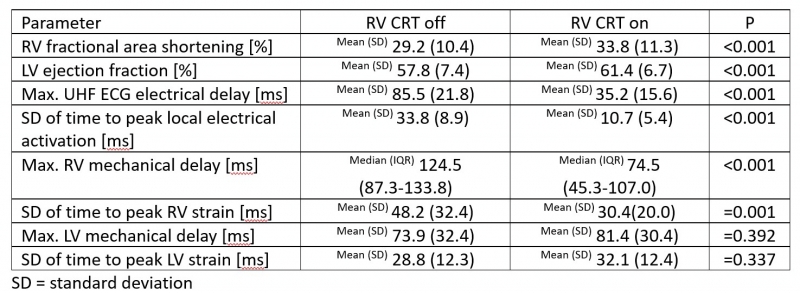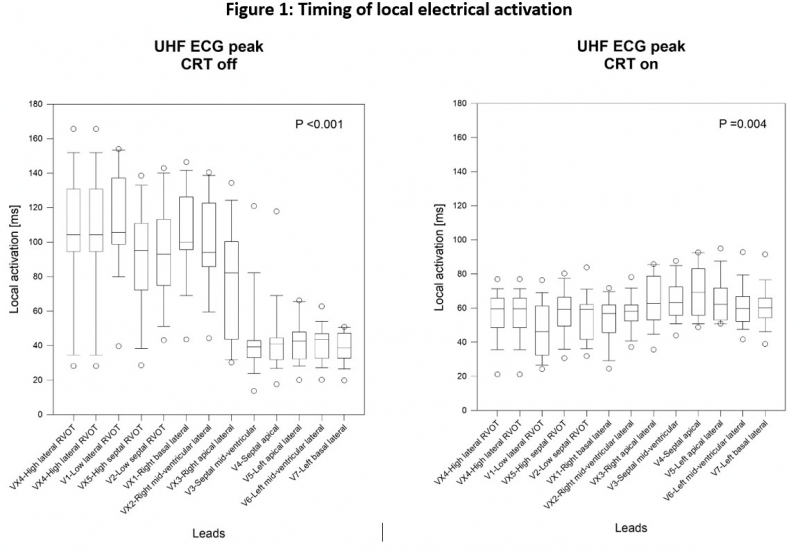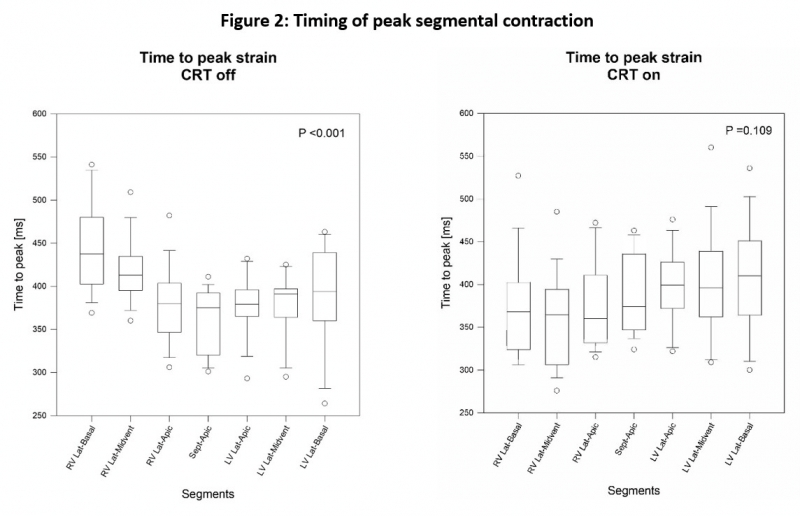ELECTROMECHANICAL RIGHT VENTRICULAR DYSSYNCHRONY AND CARDIAC RESYNCHRONIZATION THERAPY IN CONGENITAL HEART DISEASE
Background: Right ventricular resynchronization therapy (RV CRT) is occasionally used to treat pulmonary RV dysfunction in congenital heart disease. Published data are, however, limited to case reports and one small series.
Aim: We aimed to evaluate ventricular function and electromechanical dyssynchrony in RV CRT patients.
Methods: A total of 16 pediatric patients with complete right bundle branch block and symptomatic right ventricular dysfunction after surgical repair of Ebstein’s anomaly of the tricuspid valve (N=9) and tetralogy of Fallot (N=7) were evaluated using ultra-high frequency (UHF) ECG to visualize the electrical activation sequence with RV CRT off and on. Local electrical activation was allocated to respective RV and LV segments. Echocardiography, including speckle-tracking imaging, was used to track segmental motion.
Results: RV CRT improved both RV and LV systolic function and electromechanical synchrony (Table, Figures 1 and 2). There was a good correlation between electrical and mechanical ventricular activation (p < 0,001). A moderate positive correlation was found between electrical activation measured with UHF ECG and mechanical ventricular activation measured by speckle-tracking strain. strain_c (R = 0.53, R² = 0.28, p < 0.001).
Conclusion: Electrical and mechanical ventricular activation are well correlated and detectable by UHF ECG and speckle-tracking echocardiography. RV CRT significantly improves both electrical and mechanical ventricular synchrony and biventricular systolic function




